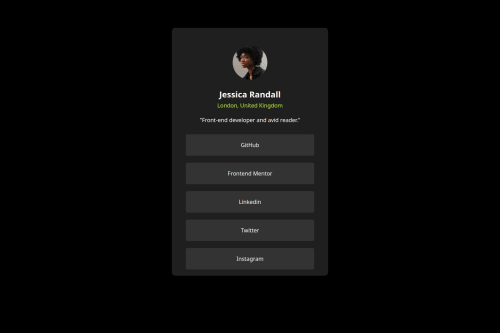Submitted about 1 year agoA solution to the Social links profile challenge
Link in Bio Solution Using HTML & CSS
@JessicaUnderwood

Solution retrospective
What are you most proud of, and what would you do differently next time?
I was able to better control my positioning for this project because I used semantic HTML. I really feel like everything starts with a strong HTML structure.
What challenges did you encounter, and how did you overcome them?I am still struggling with responsiveness and the ability to make the card fit the screen without any scrolling.
What specific areas of your project would you like help with?Responsiveness and why my card seems to scroll instead of always sitting center to the page.
Code
Loading...
Please log in to post a comment
Log in with GitHubCommunity feedback
No feedback yet. Be the first to give feedback on Jessica Foster's solution.
Join our Discord community
Join thousands of Frontend Mentor community members taking the challenges, sharing resources, helping each other, and chatting about all things front-end!
Join our Discord